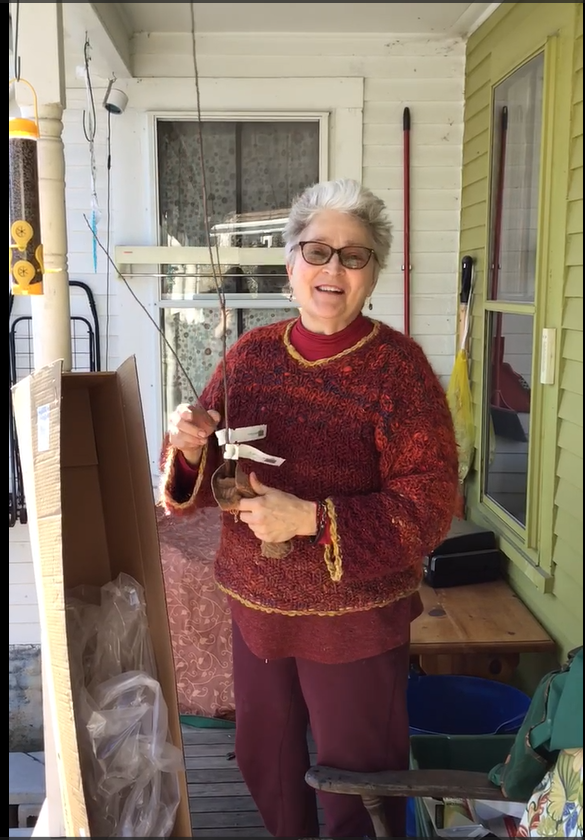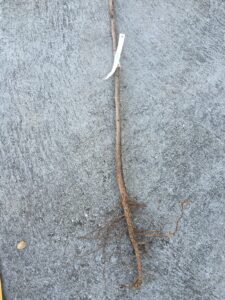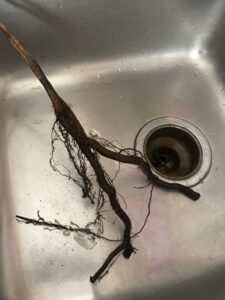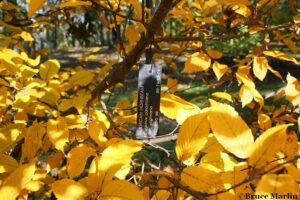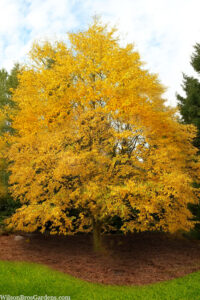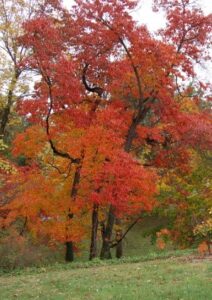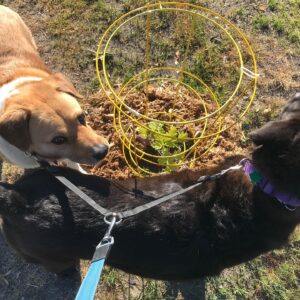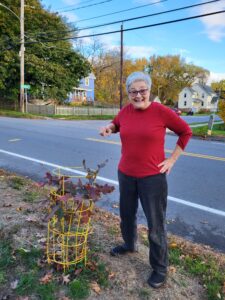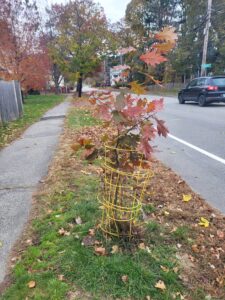Our days are again becoming longer. Now is a magical and wonderful time to quickly order and very soon plant your next generation of native shade trees! These are the structural elements of your home landscape. Multiple studies have shown many benefits, not the least of which is that adding trees to your landscape can increase your property value from 3% to 15%. TreePeople.org lists 22 other tree benefits. My favorite benefits: (1) the opportunity to increase species diversity, therefore resiliency while providing more color, texture, and wildlife habitat, (2) increased capacity of trees’ leaves to slow rain and their extensive root systems to capture and infiltrate rainwater; (3) creating additional protective shade canopies around our homes and in our developed areas. You may already know that recent studies have shown that trees have even been proven to reduce anxiety and violence.
Why Plant Native Trees?
Native plants have lived in our region’s particular weather, soil and interrelated ecosystem conditions, continually adapting over millennia. Your hard-earned money is well spent on trees that not only have the best chance of thriving in our changing weather, but also thriving in the regular soil of your yarden, special soil amendments are not helpful. They are also uniquely suited to support our region’s wildlife and the pollinators that improve the health, balance and beauty of our community.
Why Plant Bare-Root, Native Tree Seedlings in our Yards and Gardens?
Bare-root plants suffer very little transplantation shock. They are inexpensive, light and incredibly easy to plant. In contrast, large, transplanted trees have root balls with 5-8% of their original roots. Large trees are also expensive to buy and plant. Most importantly, large, transplanted trees have less-developed root systems leaving them less stable, more vulnerable to being uprooted during increasingly severe storm events. That said, bare-root tree seedlings are fragile, arriving very early in the spring, looking like a handful of sticks. They must be kept cool and moist. They must be planted within a week of delivery.
Where is the best place to buy Native, Bare-Root Tree Seedlings?
The Wild Seed Project’s Northeast directory offers an extensive database listing native plant nurseries by each state. I used to advocate for our own NH State Nursery but they carry only a few native trees and then had a terrible last season with the crazy rains. Fedco is another of my favorites as a four-fer recommendation: 1.Shopping locally, 2.Supporting businesses that are worker/consumer owned, 3.Carrying native, 4. And bare-root trees. Fedco makes it easy to have each dollar speak loudly to our region’s values. Lastly, Nasami Nursery in Whately MA is the Native Plant Trust’s nursery that grows the widest variety of native plants, shrubs and trees, many from local seeds.
Which Native Trees are Best for Residential Landscapes & Gardens?
Hardwood species and safety considerations are crucial in this time of increasingly destructive storms. Red Maples are a regional favorite but they are in decline for a wide variety of environmental reasons. I advocate for other native hardwoods placed a significant distance from your important structures. American Hornbeam, Carpinus caroliniana; Musclewood, Carpinus caroliniana var.Virginiana; Yellow, Black, River and Gray Birch, Betula spp.; Ironwood or Hop Hornbeam, Ostrya virginiana; Black Gum or Tupelo, Nyssa sylvatica; Tuliptree or Tulip Poplar, Liriodendron tulipifera; Sassafras, Sassafras albidum as well as Black, Red, White and Swamp White Oaks, Quercus spp. are all wonderful choices for wisely expanding the diversity, ecological benefits and unique loveliness of your home landscape! Confused? I highly recommend the inexpensive ‘Native Trees for Northeast Landscapes’, a Wild Seed Project Guide, as concise, full of pictures and information.
And remember, be sure to not only plant your new, bare-root, native tree seedlings 20 ‘+ away from your home, but also protect them from being mown over by planting each inside of a 30-36 tall, colored, metal, tomato/peony cage. Wrap this cage in chicken wire w/ zip ties if your plants suffer from browsing deer.
Now is the time to invest in the many benefits of initially tiny and yet future, majestic and gentle giants in your home landscape.
RESOURCES:
Trees- Better Mental Health:https://on.ny.gov/3thDom2
Tree Canopy – Crime Rates: https://www.fs.usda.gov/research/treesearch/40701
https://fedcoseeds.com/about
https://www.nativeplanttrust.org/for-your-garden/nasami-farm/
Native Trees for Northeast Landscapes: A Wild Seed Project Guide

